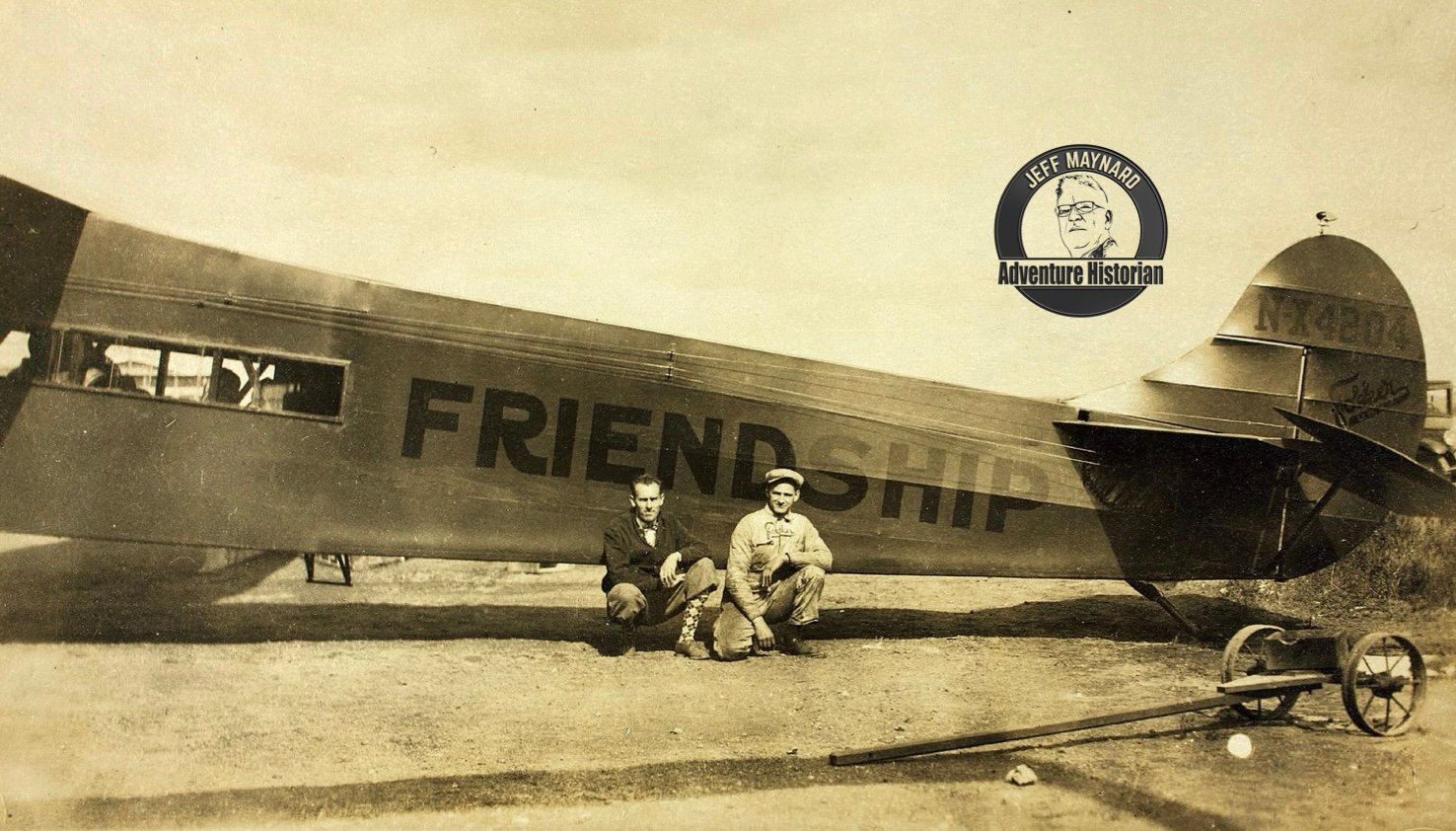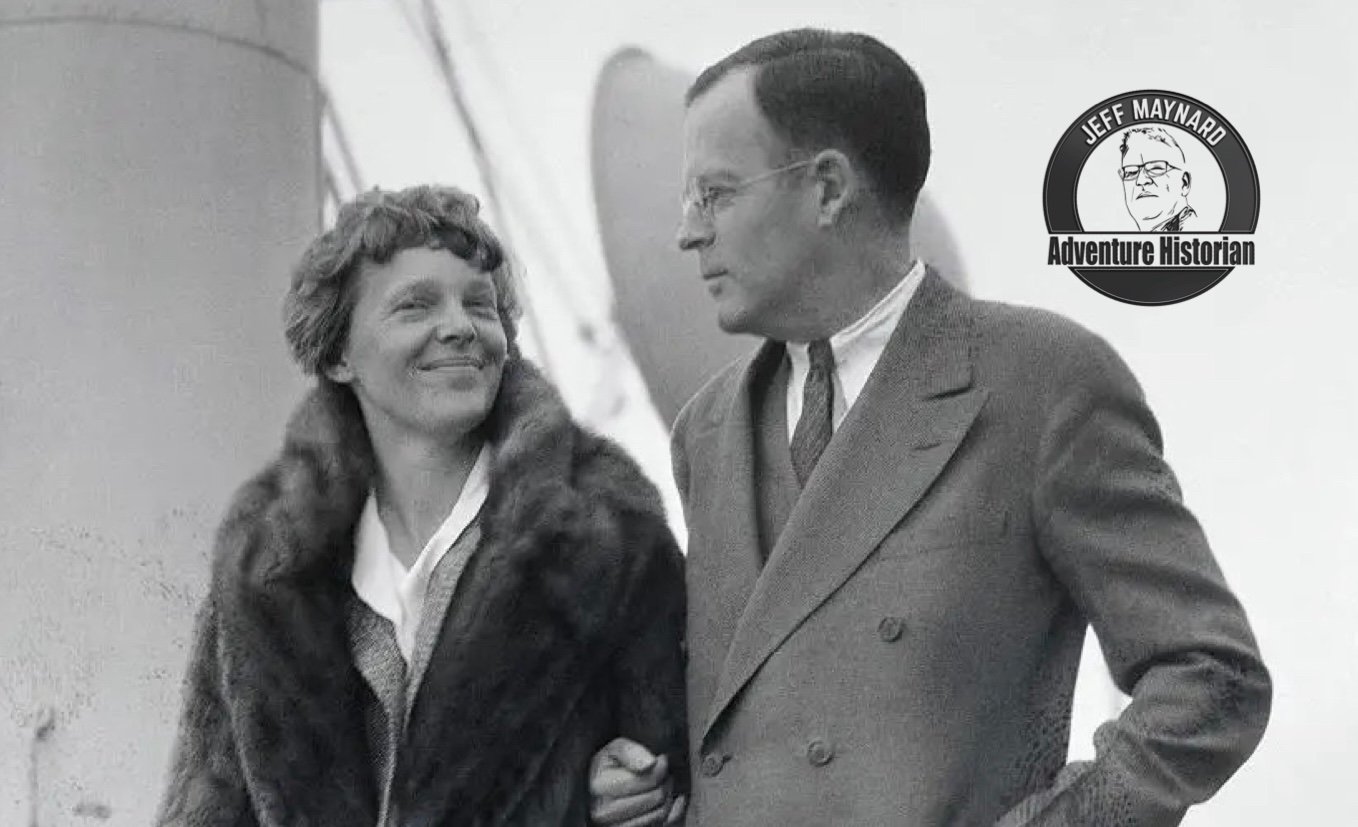Amelia Earhart: A History of Toxic Relationships with Men
Her father was Edwin Earhart and he was an alcoholic who repeatedly wasted his wife’s inherited money on failed business ventures and drinking. Her mother was Amy Otis and she came from a successful family.
Amelia Mary Earhart was born on 24 July 1897 in Kansas.
Her disappearance in 1937, while attempting to fly across the Pacific Ocean, has provided an enduring mystery and range of theories, from the probable to the absurd. But there is another mystery about this woman. One that has been hiding in plain sight. Why did she attempt to fly 2,500 miles across the ocean at night, hoping to locate an island less than a mile wide. Especially as such a flight required skilled navigation using radio direction finding equipment. And Amelia Earhart’s navigator was not experienced in such equipment.
To seek the answer to this mystery, we need to go back to Amelia Earhart’s childhood, and begin to look behind the headlines and the mythology.
Amelia Earhart grew up with a strong stable mother and a drunken unstable father. She had a miserable childhood, often moving from place to place so that her father could sober up and find work. Unsurprisingly, she looked to strong women for her role models in life. In her teens, Amelia kept a scrapbook of newspaper articles about women succeeding in a man’s world. She was determined to be independent and never rely on a man.
Amelia Earhart graduated from high school in 1916, then visited her sister who was living in Toronto, Canada. There Amelia saw thousands of wounded soldiers returning from World War I. She trained as a nurse’s aide.
In Toronto, she also went to her first air show. When she saw airplanes, the idea of the freedom and independence that flying offered, appealed to her. Still, it would be another two years before she took her first flight. She was visiting her parents in California, and when she attended another air show she paid $10 for a ten-minute joy flight. She later claimed it made her decide to learn to fly.
Amelia remained in California and took part-time jobs to pay for flying lessons. On 16 May 1923, she became the sixteenth women in the United States to be issued with a pilot’s licence. She bought herself a second-hand biplane.
Meanwhile, an inheritance from her maternal grandmother, which would have given Amelia financial independence, was administered by her parents and squandered in another failed business venture. Amelia was broke and forced to sell the biplane she had recently bought.
Her parents finally divorced and Amelia drove her mother across America to live in Boston. There, Amelia found work teaching. She maintained an interest in aviation, regularly flying and acting as a representative for an aircraft company. She also wrote a newspaper column about women pilots and the future of aviation.
During the 1920s, the world was fascinated by flying ‘firsts.’ Pilots were celebrities. This craze of the celebrity pilot reached its height in 1927, when Charles Lindbergh flew non-stop from New York to Paris. Many men had previously flown from America to Europe, making stops along the way, but Lindbergh flew solo and non-stop for more than thirty-three hours.

He was also quiet and modest to a point of being shy. His charming ‘boy-next-door’ looks appealed to people on both sides of the Atlantic, and Lindbergh instantly became an international hero. An estimated crowd of 150,000 people mobbed him in Paris. A further 100,000 cheered him in London. But these crowds were small compared to the ones waiting for Lindbergh when he returned to America. An estimated 4,000,000 people turned out to get a glimpse of him on 13 June 1927.
To the New York publisher and promoter, George Putnam, this public craze for Lindbergh was a goldmine waiting to be exploited. Within two months of the historic flight, Putnam published ‘We.’ Lindbergh had very little to do with the writing of the book, despite being credited as its author. Lindbergh later said he had no say in its title, nor did he like or understand it. But George Putnam made a fortune, selling 650,000 copies in the first year. He was also careful to get Lindbergh under contract and make sure he toured relentlessly, promoting the book.
The enormous success of ‘We’ made Putnam look for another star he could promote. The obvious choice was to find a women pilot—a female version of Lindbergh. Putnam believed the successful candidate needed to be (as well as female) American, modest and attractive.
By 1927, Amelia Earhart had found a job in Boston teaching English to foreign students. She had maintained a modest interest in flying, but did not have the time or the money to pursue it properly. In April 1928 she got a phone call from one of Putnam’s representatives, asking if she still had her pilot’s licence. She had. The representative explained that a wealthy American woman, Amy Guest, who was living in London, was sponsoring a flight across the Atlantic, from America to England. Initially, Guest had planned to go herself and be the first woman to fly the Atlantic, but she had dropped out, thinking it was too risky. But by the time she had dropped out, George Putnam was already promoting the idea, and needed a female to take Guest’s place. Putnam was interviewing potential candidates.
Thinking it might be an opportunity to get away from teaching, Amelia travelled to New York and met Putnam and the sponsors of the flight. When he saw her, Putnam immediately know he had the right person. Amelia Earhart had short cropped hair and the same innocent, almost boyish features, as Charles Lindbergh. Although she wasn’t expected to do any actual flying, the fact she held a pilot’s licence was a bonus. Even if she took the controls for a few minutes, she could be promoted as a co-pilot.
Another promotional idea also appealed to Putnam. Charles Lindbergh had been dubbed ‘Lucky Lindy’ by the newspapers. Amelia Earhart could be promoted as ‘Lady Lindy.’

Lady Lindy joins Lucky Lindy
Amelia accepted the seat on the flight and signed a contract. It stated she would receive no money. At the same time, even though she was not expected to fly, and she could not navigate on instruments, she would be listed as the person in charge. As far as the newspapers were concerned, Amelia Earhart was in charge of the whole flight.
Once he had his ‘Lady Lindy,’ George Putnam was less concerned with other members of the team.
The pilot selected was Wilmer Stultz who, three months earlier had flown non-stop from New York to Havana, Cuba. Stultz, although an accomplished pilot, was a hopeless alcoholic. (A year after the flight with Amelia Earhart, he would crash a plane while drunk, killing himself and two passengers.) Louis Gordon, would act as mechanic and reserve pilot.
The ‘Friendship Flight’ left a small airfield outside of Boston on 3 June 1928 and flew to Trepassey, Newfoundland, near the eastern extremity of the North American continent. Here the flight was held up while they waited for favourable weather before continuing.
In the film ‘Amelia,’ starring Hilary Swank as Earhart and Richard Gere as George Putnam, Stultz and Gordon are shown partying at Trepassey until Amelia threatens to fly the plane herself, forcing a smiling Stultz to swagger on board and take the controls.
The truth was different. Stultz spent the majority of the two weeks drunk. Gordon declared he would not fly with a drunk pilot and Amelia sent repeated messages to Putnam, demanding he send a replacement. But Putnam kept insisting the flight go ahead.
Finally, on 17 June, the forecast offered clear weather in the North Atlantic all the way to Europe. Gordon and Amelia found Stultz passed out drunk and attempted to sober him up and put him behind the controls of the plane. They eventually took off just before midday. Amelia saw Stultz had a three-quarter full bottle of whisky. After a lifetime of surviving an abusive alcoholic father, Amelia knew the worst thing to do would be to take the whisky away from him. That would only send him into a violent rage.
Instead, she and Gordon had to wait and hope.
After 20 hours and 40 minutes, the flight landed near Burry Port, South Wales.
Despite never holding the controls of the plane at any point, Amelia Earhart was the first woman to fly across the Atlantic Ocean.
She became an instant celebrity and was mobbed by crowds wherever she went. First in the United Kingdom, and then in the United States. George Putnam immediately got busy promoting her as Lady Lindy at every opportunity.
Importantly, he had to promote her as an accomplished pilot. The same day as Amelia, Gordon and Stultz returned to New York via passenger liner, Putnam posed Amelia with the leading flyers in New York at the time. The photograph was taken at the Biltmore Hotel.

Amelia is seated front and centre. On the left of the front row are Louis Gordon, and on the right, Wilmer Stultz. Standing behind them (left to right) are Ben Eielson and Sir Hubert Wilkins, who had just made the first aeroplane flight across the top of the world. Next is Admiral Richard Byrd, who had claimed to be the first to fly to the North Pole and had also flown across the Atlantic. Next there was Clarence Chamberlain, who had only narrowly been beaten across the Atlantic by Lindbergh. Finally, there is Bernt Balchen, the man considered the finest polar pilot in the world, and who would soon be going to Antarctica with Byrd to fly to the South Pole. Lindbergh himself was on a book tour for Putnam at the time.
But Putnam’s message was clear. Amelia Earhart was a woman who had joined the ranks of the finest fliers in the world.
Next, he sent Amelia Earhart on an exhausting promotional tour.

Within two months, Putnam rushed a book into print and credited Amelia Earhart as the author. It was titled ‘20 hrs. 40 min.’
In the coming years Putnam would force her to participate in increasingly risky flights. He would divorce his wife, marry her (after Amelia rejected him eight times) and finally send her on the flight that killed her.
How he did that and why, I will cover in another blog post. Because the photograph of the shy women with limited flying experience, sitting among the greatest flyers in the world, was only the beginning of the relationship that echoes the toxic relationship between Elvis Presley and the manipulating, lying and controlling Colonel Tom Parker.
To be continued…

